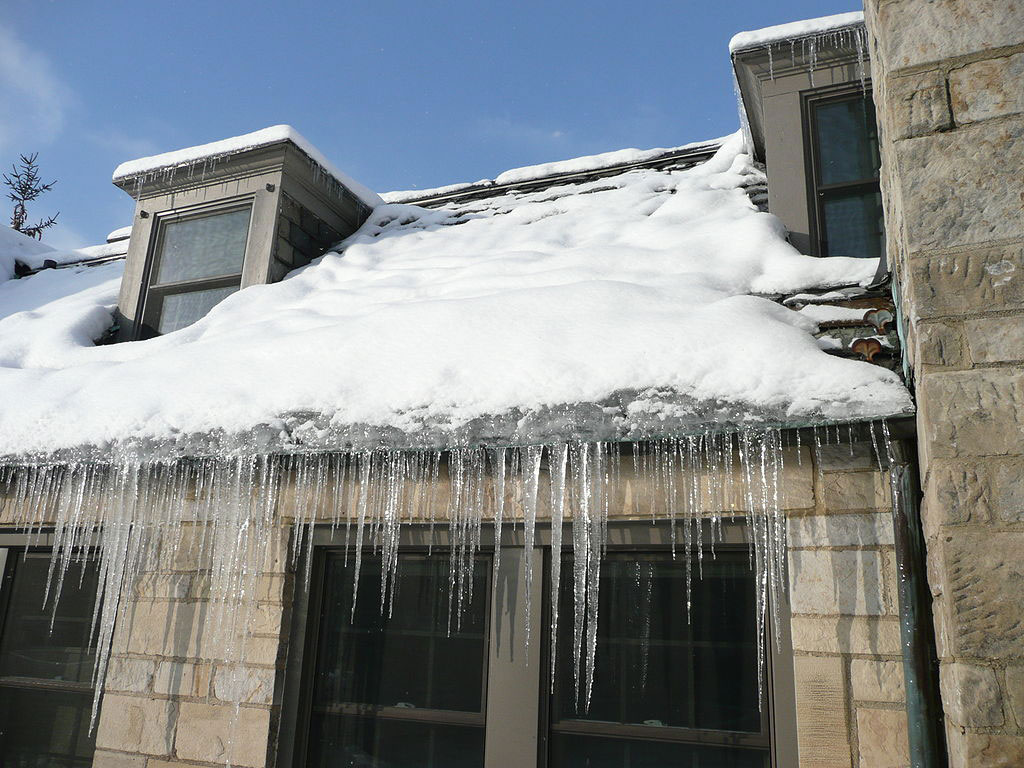How to Remove and Prevent Ice Dams on Your Kansas City Home

Ice dams can cause expensive water damage to a home’s interior. Photo credit: Dennis M. Crookshanks Construction Inc
I’ve noticed a recent uptick in media references to the damaging “ice dams” that are forming on roofs of homes in Kansas City this winter. Here are a few tips for identifying, removing, and preventing ice dams on your home.
What is an ice dam?
Ice dams are blocks of ice that trap or “dam” water on the roof of a home. If trapped long enough, the water finds its way under the roof and into the home, causing considerable water damage to the home’s interior. Ice dams are characterized by large, growing walls of ice that form on the gutters and eaves of a home’s exterior.
What causes ice dams?
Ice dams can form in winter after a moderate or heavy snowfall. They are formed when snow near the peak of a roof melts, but then refreezes at a lower point on the roof. This uneven melting pattern occurs because the surface of the affected roof has a nonuniform surface temperature. The disparity in roof surface temperature is caused when a home’s warm air escapes into the attic, rises, and gets trapped in the highest points of the attic. The warm air in the attic warms the roof, and melts the snow sitting above. Water from the melted snow rolls down the roof, and then refreezes before it reaches the ground. This unfavorable melting pattern can trap small pools of water behind the ice on the roof, making the conditions for leaks favorable. Experts say conditions are favorable for ice dams when outside temperatures in Kansas City are between 15 and 25 degrees.
How to Remove an Ice Dam
In the unfortunate case where an ice dam forms on your home, your best bet is to call a trusted expert – usually a roofing contractor. Even for the most seasoned do-it-yourselfer, the mix of cold, ice, tools and ladders is a recipe for injury. The pros can assess the situation, and have specialty tools to deal with it. The remedy usually includes carving channels into the ice that allow the dammed water to escape the roof.
How to Prevent Ice Dams
Two words – insulation and ventilation. The goal is to keep heat inside your home, and out of your attic. A properly insulated attic will keep rising warm air from entering the attic in the first place. Ventilation is important because it allows any warm air that does reach the attic to go ahead and escape to the outside.
Further Reading
For more information on dealing with and preventing ice dams, check out this article about ice dams published by the University of Minnesota.







I spoke to an old salt about ice dams and his solution was to fill panty hose with ice melt and place on top of the ice dam, the ice melt will melt the ice and clear a path for water and sunlight to clear the dams. I am trying it this week.
[…] Kansas City blogger Sarah Snodgrass has put together a video of how ice dams form and a way to prevent them. To watch the video, click here. […]